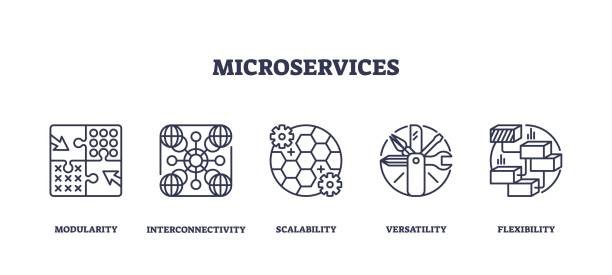
If you’ve worked with microservices, you already know the upsides: flexibility, faster development cycles, and the freedom to scale different parts of your app independently. But managing all those moving parts? That’s where the real challenge begins. Enter Kubernetes—not as a silver bullet, but as a powerful system that brings order to the chaos. In this guide, we’ll walk through how to deploy microservices using Kubernetes in a scalable, reliable, and (mostly) headache-free way.
Why Kubernetes for Microservices?
Let’s set the scene:
You’ve got six or seven services—one handles authentication, another payments, another notifications, and so on. Each is containerized with Docker, running on different ports, possibly across different machines. Managing them manually? No, thanks.
Kubernetes (K8s) gives you:
- Auto-scaling based on demand
- Self-healing: automatically restarts crashed containers
- Built-in service discovery and load balancing
- Rolling updates without downtime
It’s like having a control tower keeping every service flying smoothly.
Step 1: Containerize Your Services
Kubernetes doesn’t run raw code—it runs containers. So start by containerizing every microservice.
Example Dockerfile for a Node.js service:
DockerfileFROM node:18-alpine
WORKDIR /app
COPY package*.json ./
RUN npm install
COPY . .
EXPOSE 3000
CMD ["node", "server.js"]
Then build and push the image:
bashdocker build -t auth-service .
docker tag auth-service yourusername/auth-service:v1
docker push yourusername/auth-service:v1
Repeat for other services.
Step 2: Define Kubernetes Deployments
Each service needs a Deployment and a Service YAML file. Example for auth-service:
auth-deployment.yaml:
yamlapiVersion: apps/v1
kind: Deployment
metadata:
name: auth-deployment
spec:
replicas: 2
selector:
matchLabels:
app: auth
template:
metadata:
labels:
app: auth
spec:
containers:
- name: auth
image: yourusername/auth-service:v1
ports:
- containerPort: 3000
auth-service.yaml:
yamlapiVersion: v1
kind: Service
metadata:
name: auth-service
spec:
selector:
app: auth
ports:
- protocol: TCP
port: 80
targetPort: 3000
Deploy with:
bashkubectl apply -f auth-deployment.yaml
kubectl apply -f auth-service.yaml
Repeat this for each microservice.
Step 3: Add Ingress for External Routing To expose services externally, use Ingress (with an ingress controller like NGINX):
yamlapiVersion: networking.k8s.io/v1
kind: Ingress
metadata:
name: microservices-ingress
spec:
rules:
- host: yourapp.local
http:
paths:
- path: /auth
pathType: Prefix
backend:
service:
name: auth-service
port:
number: 80
Now requests to /auth route to auth-service.
Step 4: Auto-Scale with Kubernetes
You don’t need to guess peak traffic. Use Horizontal Pod Autoscaler:
bashCopyEditkubectl autoscale deployment auth-deployment --cpu-percent=50 --min=2 --max=10
K8s will automatically add/remove pods based on real-time CPU usage.
Step 5: Monitor and Log Everything
Observability matters. Start simple:
bashkubectl get pods
kubectl logs <pod-name>
Then scale with tools:
- Prometheus + Grafana: Metrics and dashboards
- ELK Stack (Elasticsearch, Logstash, Kibana): Logging
- Lens / K9s: Visual cluster management
Read more about tech blogs . To know more about and to work with industry experts visit internboot.com .
Real Talk: Avoid These Common Pitfalls
- Skipping readiness/liveness probes — Kubernetes won’t know if your service is healthy.
- Hardcoding secrets in env files — Use Kubernetes Secrets for sensitive data.
- No resource limits — A single pod can hog memory and crash your node.
Wrapping Up
Using Kubernetes for microservices deployment is a smart move—it automates the grunt work and gives your system resilience, scalability, and flexibility.
Yes, there’s a learning curve. But once you understand kubectl and YAML, the days of manually restarting servers will feel like ancient history.
Start small. Deploy one service. Add observability. Then scale.
Kubernetes was built for exactly this.